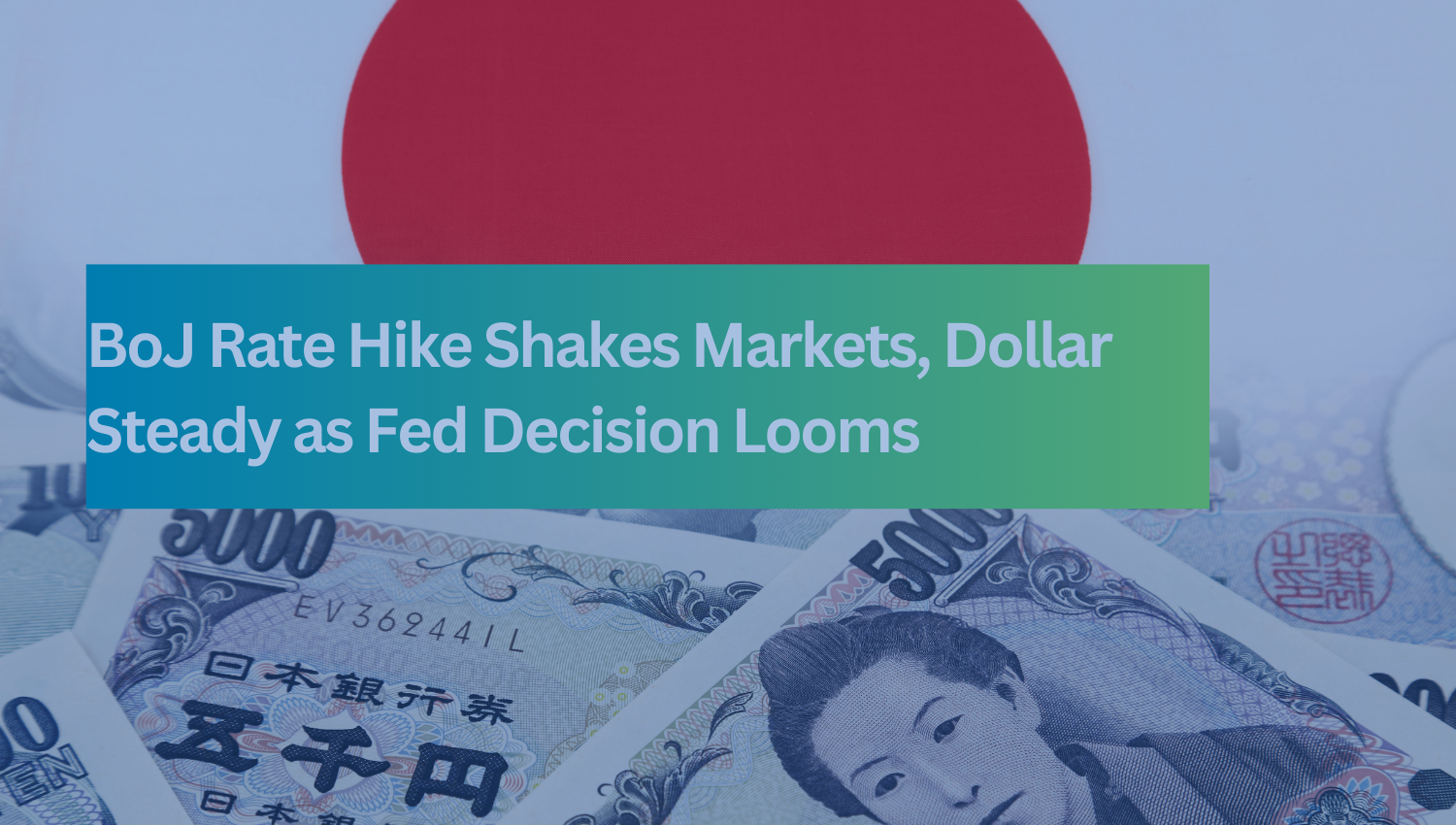Macro Outlook

The Bank of Japan (BOJ) has raised interest rates and unveiled a strategy to reduce its bond purchases, setting a new short-term rate target of 0.25%. This move signals a departure from its long-standing easy monetary policies. Prior to the BOJ's announcement, Japanese government bond yields saw a significant rise, driven by speculation that a rate hike might be forthcoming. Following the BOJ's confirmation of the rate increase, these yields remained elevated. In response, Japanese banks experienced a surge, propelling the Nikkei index higher.
On Tuesday, the dollar index was steady to lower as losses against the yen offset gains versus other currencies. Meanwhile, the market is expecting the Federal Reserve to hold rates steady on Wednesday, with attention focused on any signals about future rate moves, possibly to be clarified at the Jackson Hole symposium in late August.
Key Market Drivers
- Fed Rate Decision: The market anticipates the Fed will hold rates steady, but investors are keenly watching for any hints about future rate cuts.
- Economic Indicators: U.S. JOLTS job openings and the Conference Board consumer confidence report indicate a resilient labor market and consumer sentiment, which may influence the Fed's future policy decisions.
- Geopolitical Tensions: Increased geopolitical tensions, such as the Israeli air strike in Beirut, add to market uncertainties and impact investor sentiment.
Market Outlook
The market outlook remains cautious amid central bank actions and geopolitical tensions. The BoJ's potential rate hike could significantly impact the yen and global financial markets, signaling a shift in Japan's monetary policy. The Fed's decision on Wednesday is expected to hold rates steady, but any signals regarding future rate cuts, particularly for the September meeting, will be scrutinized. Geopolitical tensions, including those in the Middle East, contribute to market uncertainties and influence safe-haven flows.
Key Market Movements
- Dollar Index: Mixed performance, with gains against most major currencies offset by losses against the yen.
- USD/JPY: Fell amid speculation of a BoJ rate hike.
- EUR/USD and GBP/USD: Both declined slightly, reflecting broader market sentiment.
- AUD/USD: Slipped due to weaker demand concerns from China.
- U.S. Treasury Yields: Fell about 3 basis points across maturities, reflecting cautious investor sentiment.
- S&P 500 and Nasdaq: Declined as chip and megacap shares fell, though financial stocks supported the Dow.
- WTI Oil Prices: Dropped on worries about weaker demand from China and potential OPEC+ supply increases.
- Copper: Rebounded from a four-month low.
- Gold: Rallied as investors remained optimistic about potential Fed rate cuts.
Currency Summary
The dollar index exhibited mixed performance, with gains against most major currencies offset by losses against the yen. EUR/USD and GBP/USD both declined slightly, while USD/JPY fell due to BoJ rate hike speculation. AUD/USD slipped amidst concerns over weaker Chinese demand. U.S. Treasury yields declined, indicating cautious investor sentiment ahead of key central bank meetings. The S&P 500 and Nasdaq saw declines driven by losses in chip and megacap shares, while the Dow was supported by financial stocks. WTI oil prices fell due to concerns about weaker Chinese demand and potential increases in OPEC+ supply. Copper rebounded from its recent lows, and gold rallied as investors remained optimistic about potential Fed rate cuts.
Currency Outlook
The currency outlook suggests continued volatility driven by central bank decisions and economic data. The yen may strengthen further if the BoJ raises rates, signaling a significant shift in Japan's monetary policy. The dollar's performance will depend on the Fed's communication regarding future rate cuts, particularly for the September meeting. EUR/USD and GBP/USD could face downward pressure if the Fed maintains a cautious stance. Commodity-linked currencies like the Australian dollar may remain under pressure from weak Chinese demand. Geopolitical risks, such as tensions in the Middle East, will also influence safe-haven flows and market volatility. Investors should remain vigilant and adjust positions based on evolving central bank signals and geopolitical developments.
The dollar's performance reflects a balancing act between strong domestic economic indicators and global uncertainties. The BoJ's rate hike and the Fed's upcoming decision are pivotal events that could drive significant market movements. Traders should stay alert and ready to adjust their positions based on new information and central bank communications, while also keeping an eye on geopolitical developments that could impact market sentiment.
Open an account today to unlock the benefits of trading with CMS Financial

